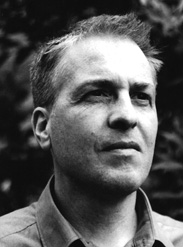My Years as a Game Developer
How it all began...
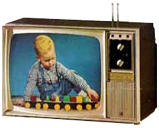 I was born in 1967, the significant year
when German television changed from black & white to colour. At that time my
father was a cameraman, my mother an assistant director, both working for
national Swiss television hence the influence of telemedia was omnipresent.
I was born in 1967, the significant year
when German television changed from black & white to colour. At that time my
father was a cameraman, my mother an assistant director, both working for
national Swiss television hence the influence of telemedia was omnipresent.
My first encounter with electronic video gaming was in the late 70's when my father once returned from a reportage in Taiwan and brought back a home version of Pong. It was a truly satisfying moment to gain control over the pixels and I remember well the endless game sessions I had with my cousin. Later a VIC20 and shortly after that a C-64 was my pride and joy. I joined a local C-64 computer club and suddenly had access to all these great games. I never really played a game through especially not the tough ones. I was more fascinated about the technology behind it, wanted to find out how they did it. I started with Basic and later changed to 6502 Assembler. I played around with Sprites and the SID-Chip, but by then I guess I did more reverse engineering rather then serious development. When the 16-Bit era arrived, the people in the C-64 computer club split up into an Atari ST and a Commodore Amiga community - Me going for the 4096 colours. I think I was one of the first of my circle of friends that owned an Amiga 1000 (terribly expensive by then).
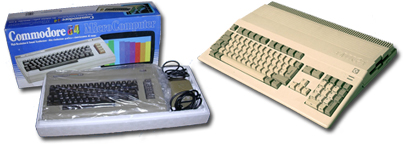
In Switzerland and especially in Germany the scene of Amiga enthusiasts grew day by day. So-called "Copy Parties" were held in a regular fashion - a meeting-point for gamers and developers (and sometimes even publishers) to show off each others talents. New connections and friendships were established quite easily this way. The parties were also an important distribution channel for coder groups to spread their latest Demos and Intros.
Music was my first love
Regarding talent I was lucky that I could do a bit of everything: coding, designing graphics, composing music, and bringing it all together. I preferred programming in 68000 Assembler rather than C. DeluxePaint was a great graphic tool and soundtrackers enabled people like me to compose without the knowledge of how to read sheets of music. And music it was that opened the door to commercial software business.
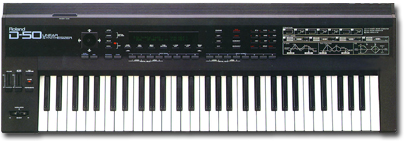
A friend of mine had a home studio with many synthesizers (I remember Roland D-50 & Yamaha DX-7 as his favourite equipment). We spent a lot of time digitizing instruments and converting them into binary wave files for the Amiga. As a result my role as sound provider was soon established in the Swiss developer scene.
SoundFX
In 1988, Chris Haller, already an Amiga crack, was nearly finished with his development on a soundtracker clone called "SoundFX" and started to look around for a publisher.
 Chris got in contact with "Linel" (the only official
publisher of Amiga Games in Switzerland) and closed a deal. Linel had a cool
product but to demonstrate the soundtrackers qualities they also needed some
demo songs. I had already played around with Chris' tracker as beta-tester
and did compose a few songs on it, for my own pleasure. Linel called me one
morning and asked if I could sell one of my compositions that Chris had
played him. I was flattered and agreed. My first contract - just like that.
Chris got in contact with "Linel" (the only official
publisher of Amiga Games in Switzerland) and closed a deal. Linel had a cool
product but to demonstrate the soundtrackers qualities they also needed some
demo songs. I had already played around with Chris' tracker as beta-tester
and did compose a few songs on it, for my own pleasure. Linel called me one
morning and asked if I could sell one of my compositions that Chris had
played him. I was flattered and agreed. My first contract - just like that.
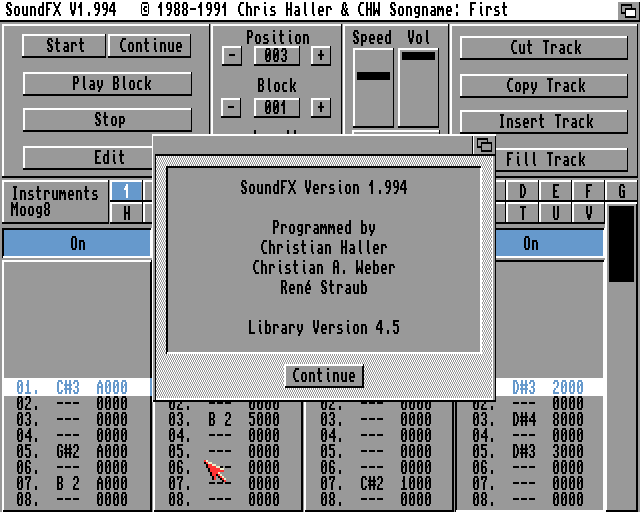
A couple of months later I got involved with another project by Linel. It was "Eliminator" by Hewson Software. Another friend of mine, Chris Weber, wrote the Amiga conversion from Atari ST and instead of losing time with transcripting the music and sound effects he simply wrote an emulation of the Atari ST sound chip for the Amiga. The downside was that the sound quality did not comply with the high expectations of Amiga gamers and so Linel decided in the last minute that at least the title music should be of Amiga standard. Therefore they called me one evening asking if I could provide a song for a game called Eliminator. "Sure", I said. "By when do you want to have it?" I asked. They replied "We must send the master copy back to Hewson tomorrow morning, you've got 8 hours". I like a challenge and this gave me the right kick to work through the night. The outcome was without surprise one of my worst productions and after that I swore never again to allow time go before quality.
Starbyte: The First Projects
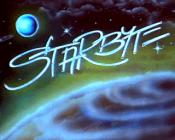 Around 1989 the German publisher "Starbyte Software" came into play. One of
the first games they published was "Leonardo", a simple puzzler by the Swiss
Golden Gate Crew. The game was nearly finished but lacked the sound effects
and music. Meanwhile, I had enlarged my portfolio of SoundFX compositions
and when they asked me I could quickly help them out with one of my songs.
For one of the sound effects I used a small bag of Cornflakes that I crushed
in front of the microphone. I think to be successful as a computer musician
it's important that you are able to deliver quickly because the audio is
usually the last element that is being built into a game and deadlines are
typically passed by the time you as a musician get involved.
Around 1989 the German publisher "Starbyte Software" came into play. One of
the first games they published was "Leonardo", a simple puzzler by the Swiss
Golden Gate Crew. The game was nearly finished but lacked the sound effects
and music. Meanwhile, I had enlarged my portfolio of SoundFX compositions
and when they asked me I could quickly help them out with one of my songs.
For one of the sound effects I used a small bag of Cornflakes that I crushed
in front of the microphone. I think to be successful as a computer musician
it's important that you are able to deliver quickly because the audio is
usually the last element that is being built into a game and deadlines are
typically passed by the time you as a musician get involved.
Over the next two years a closer relationship with Starbyte Software was established and many of Starbyte's following Amiga releases were being produced by the Swiss developer team: Leonardo, Clown-o-Mania, Winzer (a conversion), Rings of Medusa (another conversion), Rolling Ronny and Traps'n'Treasures.
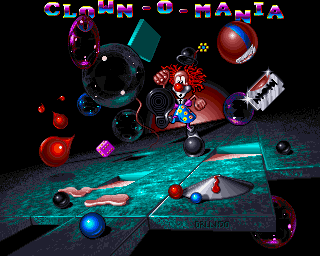 Clown-o-Mania was made by Roman Bossart, a Swiss developer I've never
actually met in person. It must have been the word of mouth that made him
call up and I was more than happy for the opportunity to provide some level
music for his game that was surprisingly clever, challenging and still fun
to play. Greatful to be part of it I spent some more time in SoundFX. After
about a week or two I was finished with the task and for once quite happy
with the result.
Clown-o-Mania was made by Roman Bossart, a Swiss developer I've never
actually met in person. It must have been the word of mouth that made him
call up and I was more than happy for the opportunity to provide some level
music for his game that was surprisingly clever, challenging and still fun
to play. Greatful to be part of it I spent some more time in SoundFX. After
about a week or two I was finished with the task and for once quite happy
with the result.
By the end of 1989 I decided to write my own game. I have always enjoyed playing Action Adventures (Son Son II on the PC Engine was one of my favourites) and wanted to create a game that I would like to play myself. Ruedi Hugentobler, music genius and friend, shared my passion and together we had many funny sessions and crazy ideas of what we wanted to achieve. Alongside I developed "LevelEd", a level editor to create playfields made out of 256 32x32 pixel blocks and started to work on the design of the main character. Ironically our original character started as a girl called "Scooter" and only over the years changed into pirate captain Jeremy Flynn. While it took us quite a long time for the characters name to develop, the name for the game itself was a given. "Traps'n'Treasures" was easy to remember and brought the concept of an Action Adventure to the fore.
Starbyte: The X-Mas Party
 On the 20th November 1990, developers, freelancers and business partners
from all over the world were invited to join Starbyte's traditional
Christmas party in Bochum, Germany. I saw the opportunity and took a demo of
my game with me. After dinner I found a moment to show it to the Managing
Director and his assistant. They quickly showed an interest in the
half-finished product and the same evening they asked me to come to the
director's office. A prepared contract was already lying on the desk. The
price was open for negotiation but after 30 minutes we reached a stalemate owing
to different price expectations. Based upon my vision of the final game I
was hoping for more. The Managing Director finally got tired of this and
took a dice out from a drawer and told me to choose between even and odd
numbers. If I won then the price would go up another 5'000 DM, otherwise it
would drop by 5'000 DM. I was quite shocked but felt exhausted after a long
days drive and I wanted to have the deal settled. The dice rolled and. I
WON. Completely overwhelmed by so much luck and positive feedback for the
game I signed a contract that gave me 8 months to finish the product. A
piece of cake, I thought.
On the 20th November 1990, developers, freelancers and business partners
from all over the world were invited to join Starbyte's traditional
Christmas party in Bochum, Germany. I saw the opportunity and took a demo of
my game with me. After dinner I found a moment to show it to the Managing
Director and his assistant. They quickly showed an interest in the
half-finished product and the same evening they asked me to come to the
director's office. A prepared contract was already lying on the desk. The
price was open for negotiation but after 30 minutes we reached a stalemate owing
to different price expectations. Based upon my vision of the final game I
was hoping for more. The Managing Director finally got tired of this and
took a dice out from a drawer and told me to choose between even and odd
numbers. If I won then the price would go up another 5'000 DM, otherwise it
would drop by 5'000 DM. I was quite shocked but felt exhausted after a long
days drive and I wanted to have the deal settled. The dice rolled and. I
WON. Completely overwhelmed by so much luck and positive feedback for the
game I signed a contract that gave me 8 months to finish the product. A
piece of cake, I thought.
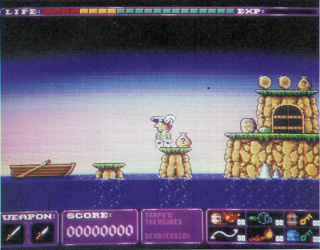
Inexperienced with the real software business as such I ignored the signs of the elapsed time and continued to bring more features and ideas into the game. Redesign after redesign I turned into a victim of my own quality expectations. I wanted to make it right.
Starbyte: The Ultimatum
In July 1991 I had to accept that I was way behind schedule and finishing the game on time was an illusion. I had already invested too many hours in the graphic design and decided to outsource this task to someone else. Orlando, by far one of the most capable graphic artists on the Amiga at the time, was free and was keen to help me out. Unfortunately he also knew the value of his talent and the required amount of work was more than a favour. I had to sacrifice half of my expected payment for score panels, character animation frames, the title image, high score images, the overview map, fonts, backdrops and some other elements, but I think you will agree that it was money well spent. The fantastic title screen was a masterpiece and really expressed the spirit of the game. Ruedi on the other hand was working on the level design and was happy to compose the sound effects.
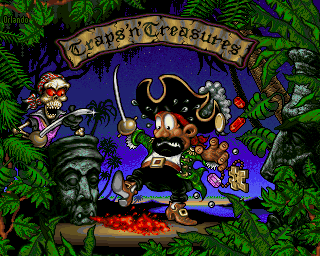
Things looked promising again until December 13th 1991, the day I received a reminder letter from Starbyte. It said that I didn't finish the game on time and they would give me a last deadline to the 2nd of January 1992. Otherwise they would sue me for damages which would cost me around 200'000 DM!
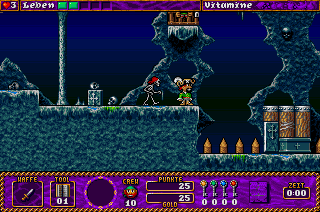
I was devastated. Having already invested so much time and expense into Traps'n'Treasures I couldn't quite believe, it would end like this. I was overdue and in very bad position regarding the contract. After several stressful phone calls with Starbyte, I could persuade them that finishing the game was still the best solution for everybody. In the meantime Starbyte had employed a new product manager and finally there was someone that understood the needs and problems of us developers. He became a regular contact, played the game, told me what he liked or disliked and gave me regular feedback about the bugs he found.

In July 1993, I got Traps'n'Treasures finally finished. I prepared the final version for a last quality check and replaced the title screen with a dummy picture so they could not master it until they paid me out. A few days later someone from Germany called and told me that the game was already available in the shops. I couldn't believe it. Starbyte replaced the dummy picture with a picture from an earlier version and put the game onto the market.
Starbyte: The Lawyers
To make it worse, Starbyte Software GmbH had become insolvent and declared bankruptcy. Needless to say that being one of many creditors there was little hope of any money. Looking on the bright side of it all I thought: "Hey! I'm free now on the obligations of my contract and I will be able to offer my game to another software company for even more money!". I was wrong. The rights on Traps'n'Treasures were bound and perished with the rest of the company.
Some time later we heard that another company had taken over Starbyte. This company was also called "Starbyte" but now ran under the name of the former Managing Director's wife. This way they could take over the rights on the games without the need to pay their debts. For a moment I was sure that my money was gone for good.
But I didn't want to give up. I arranged a meeting with a Swiss lawyer in Zurich who was neither familiar with the German law nor had ever played a computer game in his life. To my surprise he helped me to get at least some of the money back from the new company claiming that it was illegal to make changes on my artwork without asking for my permission.
Unfortunately the lawyer also cost money and in the end I had about 4'000 Swiss Franks left from what I had expected to earn with my game. I knew from the beginning that money wasn't the incentive but it was disappointing to end up with so little after 3 years of investment.
The Happy End
However, one of the best things was to finally find my game piled in the shops and it was like an additional reward every time it was reviewed. I remember the great anticipation I felt when I entered the paper stores to hopefully spot my game somewhere on a magazine.
Even though it didn't pay out financially, I'm pleased that I had this experience. In these years of game development I learned a lot about myself, discovered my strengths and weaknesses and got used to working under pressure. Most important of all, I learned about the importance of friendship and team spirit. Without the support of my friends I'm sure I wouldn't have made it.
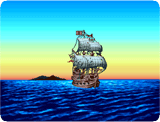
Feel free to visit my blog http://kingromans.blogspot.com to find some further visuals or audio material from Traps'n'Treasures and other ancient Amiga projects.
